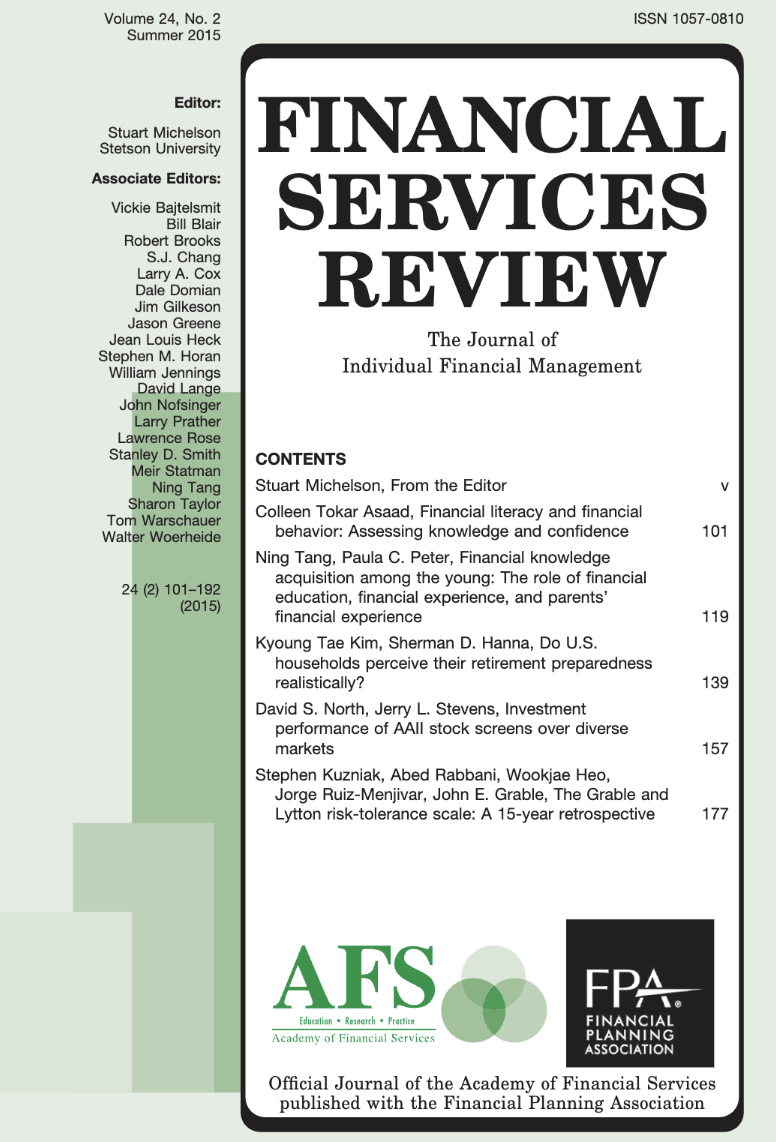The Grable and Lytton risk-tolerance scale
A 15-year retrospective
DOI:
https://doi.org/10.61190/fsr.v24i2.3240Keywords:
Risk tolerance, Risk, Risk scale, Risk scoring, Risk assessmentAbstract
Over a decade ago, Grable and Lytton (1999) developed, tested, and published a financial risk-tolerance scale in Financial Services Review that has since been widely used by consumers, financial advisers, and researchers to evaluate a person’s willingness to engage in a risky financial behavior. Analysis of data (n = 160,279) spanning the timeframe 2007 to 2013 provides evidence that the risk-tolerance scale’s reliability and validity have remained robust since the scale was first developed. The scale’s estimated Cronbach’s α was 0.77 during this time period. Consistent with the literature, high scale scores (representing a greater willingness to take risks) were found to be associated with equity ownership and negatively related to cash and bond holdings.
Downloads
Published
How to Cite
Issue
Section
License
Copyright (c) 2014 Academy of Financial Services

This work is licensed under a Creative Commons Attribution-NonCommercial 4.0 International License.
Author(s) retain copyright and grant the Journal right of first publication with the work simultaneously licensed under a Creative Commons Attribution-NonCommercial 4.0 International License that allows to share the work with an acknowledgment of the work's authorship and initial publication in this Journal.
This license allows the author to remix, tweak, and build upon the original work non-commercially. The new work(s) must be non-commercial and acknowledge the original work.


